Direct-to-Film (DTF) printers are transforming the printing industry, offering businesses a cost-effective way to create vibrant, durable designs on fabrics like T-shirts, hoodies, and bags. Whether you’re a small business owner, an e-commerce seller, or a printing shop, choosing the right DTF printer can make or break your success. This guide walks you through the key factors to consider when selecting a DTF printer to match your business needs. From print size to budget, we’ll cover everything to help you make an informed decision.
Why Choose a DTF Printer?
DTF printers print designs onto a special film, which is then transferred to fabric using heat and adhesive powder. Unlike traditional methods like screen printing, DTF doesn’t require pre-treatment or complex setups, making it ideal for small batches and custom orders. The prints are vibrant, durable, and work on various fabrics, including cotton, polyester, and blends. This versatility makes DTF printers a great choice for businesses in apparel, promotional products, and home decor.
Before buying, you need to consider your business goals, production volume, and budget. The right printer should align with your needs while offering good value. Let’s dive into the key factors to consider.
Key Factors to Consider When Buying a DTF Printer
Print Size and Width
The print size, or width, of a DTF printer determines the size of designs you can produce. Most DTF printers come in standard widths like 30cm (A3), 60cm (A1), or larger formats like 120cm. Your choice depends on the products you plan to create.
- Small businesses or startups: A 30cm printer is ideal for T-shirts, hats, and small items. It’s compact, affordable, and perfect for low to medium production.
- Medium to large businesses: A 60cm printer, such as the DTF pro 60 a1, suits larger items like hoodies, bags, or bulk orders. It handles bigger designs and higher volumes.
- Specialized needs: If you’re printing oversized items like banners or large textiles, consider a 120cm printer, though these are pricier and need more space.
Check your product range and order sizes. If you’re starting small, a 30cm printer is enough. For growing businesses, a 60cm model offers flexibility without breaking the bank.
Production Speed
Speed matters if you’re handling high-volume orders or tight deadlines. DTF printers vary in speed based on their printheads and technology. For example, printers with multiple Epson i3200-A1 printheads, like the DTF pro 60 a1, can produce up to 15 square meters per hour, ideal for busy shops. Entry-level models, like the LINKO S602, print at 4-6 square meters per hour, suitable for smaller operations.
Consider your daily output. If you’re fulfilling 50-100 T-shirts daily, a faster printer saves time. For occasional custom orders, a slower, budget-friendly model works fine. Always balance speed with quality—faster isn’t always better if it compromises detail.
Print Quality and Ink System
Print quality depends on the printer’s resolution and ink system. Most DTF printers use CMYK + white ink to create vibrant designs with a solid base layer for dark fabrics. High-resolution printheads, like Epson’s i1600 or i3200, deliver sharp, colorful prints.
Look for printers with a reliable ink system, including:
- White ink circulation: Prevents clogging, especially important for white ink, which is thicker.
- Ink capacity: Larger ink tanks (e.g., 1L per color) reduce refills and downtime.
- Durability: Prints should resist fading, cracking, and washing. Quality inks ensure designs last through 50+ washes.
Brands like DTF LINKO offer printers with advanced ink systems for consistent results. Test sample prints or check reviews to ensure the printer meets your quality standards.
Ease of Use and Software
A user-friendly DTF printer saves time and reduces errors, especially for beginners. Look for models with intuitive controls and reliable RIP software (e.g., CADlink or PrintFactory). The software handles color management, design placement, and white ink layers, which are critical for DTF printing.
Some printers, like those from DTF LINKO, include plug-and-play setups and training support, making them ideal for new users. Check if the printer comes with:
- A clear interface or touchscreen.
- Compatibility with design software like Photoshop or Illustrator.
- Technical support or tutorials for setup and maintenance.
If your team lacks printing experience, prioritize ease of use to minimize the learning curve.
Budget and Operating Costs
DTF printers range from $5,000 to $30,000, depending on size, speed, and features. Entry-level models, like the DTF printer from LINKO, start at around $5,000-$10,000, while high-end models like the DTF pro 60 a1 can cost $15,000 or more. Financing options, like monthly payments of $400-$800, can make pricier models accessible.
Beyond the initial cost, consider ongoing expenses:
- Ink: About $20-$30 per liter, with a typical T-shirt using $0.10-$0.20 of ink.
- Film: PET film costs $0.50-$1 per square meter.
- Powder: Adhesive powder is around $5-$10 per kilogram.
- Maintenance: Regular cleaning and occasional printhead replacement (every 1-2 years) add to costs.
Calculate your expected production volume to estimate monthly costs. A printer with higher upfront costs but lower ink or film expenses may save money in the long run.
Space and Setup Requirements
DTF printers need space for the printer, heat press, and powder shaker. Entry-level models (30cm) are compact, fitting in small workshops (about 10-15 square meters). Larger models (60cm or more) require 20-30 square meters, plus ventilation for ink fumes.
Check if the printer includes a built-in powder shaker or dryer, as separate units take up more space. Ensure your workspace has stable power (220V for most models) and proper ventilation.
Brand and Support
Choosing a reputable brand ensures reliability and support. Brands like LINKO, Epson, and Mimaki are known for quality DTF printers. LINKO, for example, offers a range of models, from budget-friendly to high-performance, with good customer support. Check out DTF printer for sale options from LINKO for reliable choices.
Look for:
- Warranty: At least 1-2 years, covering major components like printheads.
- Technical support: Phone, email, or on-site assistance.
- Training: Tutorials or setup guides for beginners.
- Parts availability: Easy access to replacement parts like ink or printheads.
Read reviews on platforms like X to see user experiences with specific brands. A reliable brand reduces downtime and keeps your business running smoothly.
Matching the Printer to Your Business Needs
Your business type and goals determine the best DTF printer. Here’s how to match your needs:
- Startups or small businesses: Choose a 30cm printer. It’s affordable, compact, and handles small orders (e.g., 20-50 T-shirts daily). Ideal for Etsy sellers or local shops.
- E-commerce with medium volume: A 60cm printer, supports larger designs and higher output (50-200 items daily). Great for online stores with growing demand.
- Large printing shops: Invest in a high-speed, 60cm or 120cm printer for bulk orders. These handle complex designs and high volumes, perfect for promotional or wholesale businesses.
- Specialty businesses: If you focus on niche products like hats or bags, ensure the printer supports versatile film sizes and has precise RIP software.
Consider your growth plans. A slightly larger printer may cost more now but save you from upgrading later.
Tips for Getting Started
Once you’ve chosen a DTF printer, follow these tips to maximize its value:
- Test materials: Try different fabrics (cotton, polyester, blends) to ensure compatibility.
- Maintain regularly: Clean printheads weekly and check ink levels to avoid clogs.
- Start small: Begin with simple designs to learn the process before tackling complex orders.
- Market your products: Use social media to showcase your DTF prints and attract customers.
- Track costs: Monitor ink, film, and powder usage to optimize profits.
Common Mistakes to Avoid
- Buying based on price alone: Cheap printers may have higher maintenance costs or lower quality.
- Ignoring space needs: Ensure you have enough room for the printer and accessories.
- Skipping training: Learn the software and process to avoid costly errors.
- Overlooking support: Choose a brand with reliable customer service to handle issues.
Conclusion
Choosing the right DTF printer for your business involves balancing print size, speed, quality, budget, and support.









